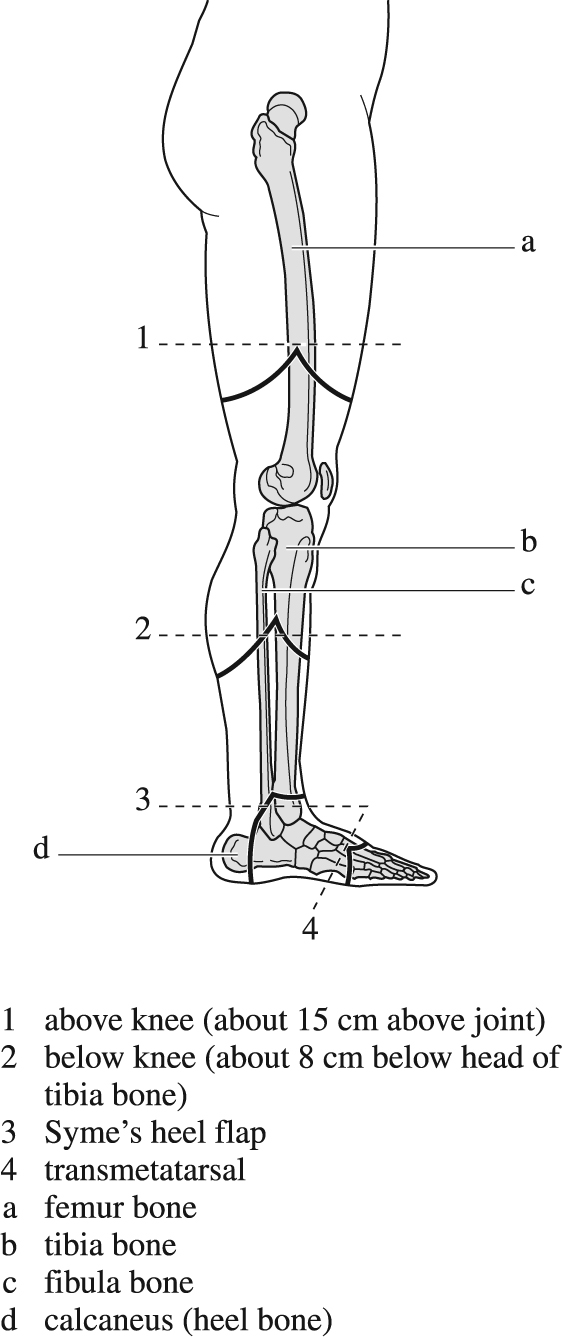Severance of a limb, or part of a limb, from the rest of the body. The leg is the most common site of amputation. It is usually performed as a controlled operation and may be required for a variety of reasons. In the young, severe injury is the most common cause, when damage to the limb is so extensive as to make it non-viable or functionally useless. In the elderly, amputation is more often the result of vascular insufficiency, resulting in gangrene or intractable pain. Sarcoma (see CANCER) of bone, muscle or connective tissues in a limb is another reason for amputation.

Amputation sites of lower limb.
The aim is to restore the patient to full mobility with a prosthetic (artificial) limb, which requires both a well-fitting PROSTHESIS and a well-healed surgical wound. If this is not possible, the aim is to leave the patient with a limb stump that is still useful for balancing, sitting and transferring. Common types of lower-limb amputation are shown in the illustration. The Symes amputation can be walked upon without requiring a prosthesis. The below-knee amputation preserves normal flexion of the knee, and virtually normal walking can be achieved with a well-fitting artificial limb. Learning to walk is more difficult following an above-knee amputation, but some highly motivated patients can manage well. After any amputation it is not unusual for the patient to experience the sensation that the limb is still present: this is called a ‘PHANTOM LIMB’ and the sensation may persist for a long time.